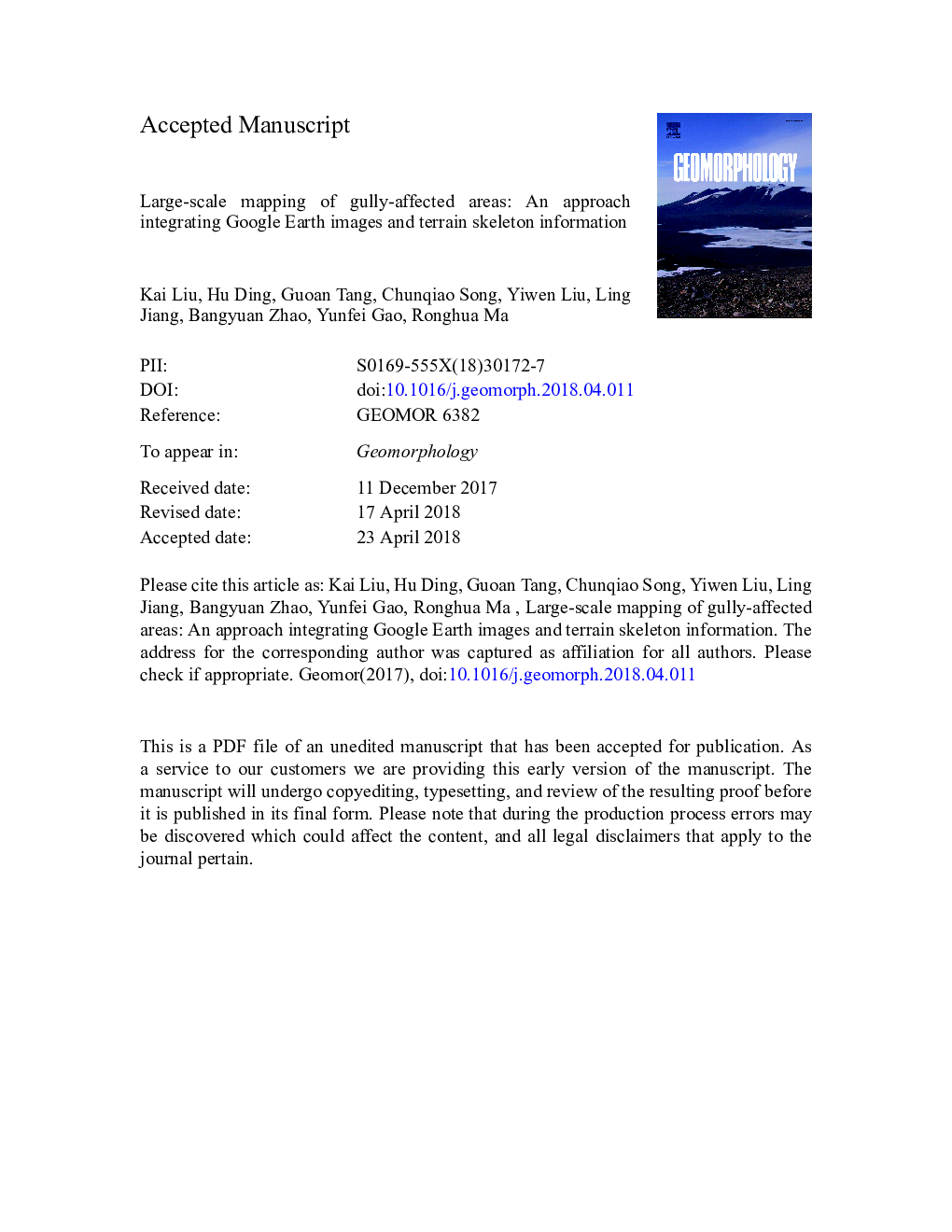| Article ID | Journal | Published Year | Pages | File Type |
|---|---|---|---|---|
| 8907994 | Geomorphology | 2018 | 52 Pages |
Abstract
The gully erosion process poses a threat to the ecological environment, land management, and agronomic productivity. Although current studies on gully feature mapping conducted at hill slope or catchment scales have yielded good performances, the approach for large-scale gully-affected areas mapping is still challenging. This study demonstrates a novel approach inspired by the relationship between gully distribution and surface runoff. The Google Earth (GE) images and ASTER GDEM were applied to explore the feasibility of open data source in large-scale gully mapping. The GE images were used for the initial classification based on object-based image analysis and random forest model. The drainage network obtained from the digital elevation model was generated as the terrain skeleton which controls the gully bodies. The rule sets for removing commission and omission errors were developed based on the spatial relationship between the segments and drainage networks. The experiment was conducted at one of the most serious erosion regions in the Loess Plateau, with an area of 154,000â¯km2. Owing to the novel integration strategy of image and topographic features, the mapping results prove the approach extracts gully-affected areas efficiently with acceptable accuracy (overall accuracy is 78.80%) even within the complex gully zone. Compared with visual interoperation, the proposed approach provides a potential tool to erosion research community that could also be of interest to geomorphologists and policy makers.
Related Topics
Physical Sciences and Engineering
Earth and Planetary Sciences
Earth-Surface Processes
Authors
Kai Liu, Hu Ding, Guoan Tang, Chunqiao Song, Yiwen Liu, Ling Jiang, Bangyuan Zhao, Yunfei Gao, Ronghua Ma,
